Ship of dreams: First mission to Europa in more than a generation designed
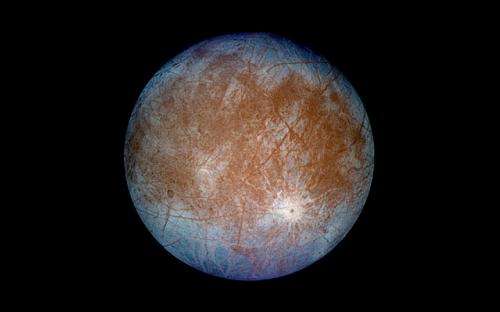
It all began on a clear night in 1610 AD. Galileo Galilei caught glimpses of four bodies that would later bear his name—the Galilean Moons. Because Jupiter's largest satellites were so bright, Galileo called them, "stars."
Over the centuries, Europa, the most luminous of all the Galilean moons, has provided an abundance of mysteries. These culminated in what may have been a literal explosion in December 2012, when a cloud of water vapor was seen 20 miles over its south pole. This eruption was tiny on the cosmic scale, but enormous in its importance to astrobiology.
Outside of Earth, Europa may be the most hospitable home for life inside the Solar System. Four billion years of tidal heating and a liquid ocean may have given rise to something we can identify as life. A man-made satellite in the Jovian system could potentially capture traces of that life in the water vapor shooting from Europa's surface. Yet, in spite of the exciting science, a dedicated mission to Jupiter hasn't launched in a generation.
That could all change if the Europa Clipper were built.
The Early Voyages
Though Europa was discovered more than 400 years ago, it wasn't until deep space satellites came along that we had our first good look at one of the most luminous objects in the Solar System. Between 1973 and 1993, eight satellites flew past Europa. Each dispelled some of the uncertainties surrounding this mysterious body orbiting 390.4 million miles (628.3 million kilometers) away.
The first arrived in 1973. The Pioneer 10 spacecraft sent back the first close-up photograph of that bright moon. Europa reflects back into space 64 percent of the light that falls on its surface. By contrast, Earth's light reflectivity, or albedo, is 33 percent. Venus' is 76 percent. In other words, Europa's brightness falls somewhere between Earth's liquid oceans and Venus' constant cloud cover.
But what creates the brightness? With the Sun 20 times dimmer-five times further away from Jupiter than it is from Earth- Europa probably isn't covered in liquid water the way that the Earth is. As for clouds, Europa is slightly smaller than our Moon. It lacks the gravity to maintain a substantial atmosphere. A planet coated in solid ice would explain Pioneer's observations, but it doesn't account for one big effect: Jupiter's tidal force. Europa's proximity to Jupiter means that it might very well be heated from the inside out, melting some of the ice at least near the center.
Shortly before the arrival of the next probe into the Jovian system, another suggestion was made: Europa might have three layers. In this model, the innermost core would be silica. The outermost core would be ice. The pressure of being slung around Jupiter every 3.5 days might generate enough tidal heating to maintain a liquid ocean in between. If this model were true, even though the third layer is solid, Jupiter's tidal forces might be strong enough to crack the ice shell covering of Europa as it moves rapidly around the gas giant.
The Voyager spacecraft arrived in 1979 and discovered that Europa's ice is deeply and globally fractured, lending credence to the three-layer model. In addition to showing us the ruptures in the ice, Voyager revealed something more—that Europa's fractures are filled with some kind of dark material. Since the dusty stains are confined to the fractures, not distributed equally across the moon's surface, it stands to reason that the material, whatever it is, might be welling up from inside Europa through the cracks.
That would still leave the question of what the material is and where it originated from. It could be coming from within Europa itself. However, material rising from the suspected subsurface ocean would be passing through many kilometers of ice. Models are unclear as to the circumstances under which that exchange might be taking place. Another possibility is that dark material is being delivered to the surface by comets or meteorites. That presents yet another quandary, however. Impacts leave craters behind as a sign of their passage. Apart from the dark cracks, Europa's surface appears surprisingly youthful. Nearby moons Callisto and Ganymede are covered in craters. Living as they do in the same neighborhood, how could Europa have so few impact sites?
While the search for the dark material's origins remains unsolved, the next probe to enter the system – the Galileo satellite – explained the lack of craters. As the only mission to make repeated visits to Europa, Galileo photographed changes in the rafts, domes and flows of surface ice on the surface between subsequent trips over its nearly 15-year-long mission. By proving that the ice itself is changing, Galileo allowed us to put the pieces of the fractured puzzle together. We now believe that the same Jovian tides causing the solid surface of Io to lift up 300 feet (100 meters) are heating Europa from the inside out. The heat makes its way through the ice layer, causing warm ice or water to rise from the interior, affecting changes at the surface over short time scales.
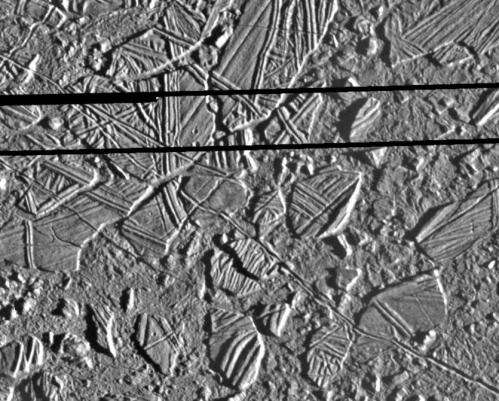
Thanks to Pioneer, Voyager and Galileo, we had learned more in three decades than in the preceding five centuries. The brightness of the ice was known to be the result of continual surface renewal. The enormous cracks, sometimes referred to as "flexi", appear to originate when the solid ice shell flexes as Jupiter pulls on Europa. In a nod towards the three-layer-model, Galileo's measurements also indicated that a large, salt water ocean might well exist beneath the ice shell. While all this was being discovered half a billion miles away, things were being uncovered in our own backyard that made the possibility of Europa's oceans even more exciting.
In 1977, hydrothermal vents teeming with life were discovered deep within Earth's oceans. This was the first proof that life could thrive in the absence of light, using heat as a source of chemical power. This led to the current understanding that life can prosper as long as there is heat and water. With a probable ocean and definite heat source, Europa suddenly became a leading candidate in the search for habitability.
An ambitious mission was conceived to explore that exciting possibility. The mission was called the Jupiter Europa Orbiter (JEO), and was a joint project between NASA and the European Space Agency. It's overall science objective was to study the emergence of habitable worlds around gas giants. JEO would have determined the existence, extent, and salinity of Europa's ocean. It would have looked for fresh water at the boundary between the ocean and the ice shell, studied the distribution of chemicals that can feed life, and looked for more signs of active geology. It would have mapped the complex radiation environment caused by Jupiter, so that a future mission might survive landing on Europa's surface.
First, though, JEO had to get into orbit around Europa. That proved to be the death of the mission.
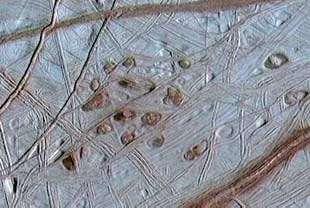
Gravity Assist
To get to Europa, one has to first get to Jupiter. Here's how that works.
After launching from Earth's surface, a satellite must successfully separate from its rocket, pick up speed and head in the right direction. It must not get destroyed by an asteroid, meteor or other debris as it travels. Once it gets to Jupiter years later, it has to turn to avoid sailing past Europa.
Turning while traveling 44,000 miles per hour is tricky. The Galileo satellite managed to stay on target using only 67 gallons of fuel. That incredible efficiency of 36 million miles per gallon was made possible by the fact that Galileo was free to roam throughout the entire Jovian system. JEO, on the other hand, was bound for one specific moon. As it approached Europa, the plan was to use Jupiter and the other Galilean moons to make a gravity-assisted entry.
An easy way to picture how gravity-assist works is to think of JEO as a small ball rolling through a bathroom sink. As the heaviest object around, Jupiter rests at the center of the system, where the drain would be. The ball that is JEO rolls towards the center, picking up speed. At it rolls past the drain and up the side of the sink, the gravity from the sister moon Ganymede slows JEO down and turns it back toward the center. In this way, after many, many passes, JEO would successfully turn and enter into a stable orbit around Europa.
As the number of turns increased, the fuel requirements grew, and so did the cost of the mission. A combination of financial and physical forces conspired to kill the JEO project in 2002. Time, money and gravity weighed down other similar projects. The Jupiter Icy Moons Orbiter (JIMO) mission to Europa, Ganymede, and Callisto, tentatively set for 2015, was also cancelled. As years passed and numerous missions to Mars launched in rapid succession, many people, including planetary scientist Robert Pappalardo at NASA's Jet Propulsion Laboratory, hoped to get just one off the ground to Europa.
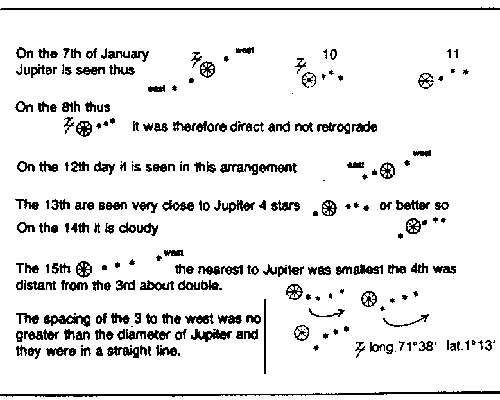
"Getting a mission to Europa is long overdue," said Pappalardo. "It would be tragic if 50 years from now we get a lander there, find signs of life, and realize that we could have been working there for decades."
After what happened with JEO and JIMO, it was clear that for a Europa mission to be successful, it would have to follow Galileo's flight path, using Jupiter as an anchor, rather than try for an exclusively Europan orbit. To compensate for not remaining in constant orbit above Europa, a successful mission would fly past the moon numerous times. To keep the cost and complexity to a minimum, it would have to execute a series of simple studies with each flyby. With an excellent design, careful planning, and enough passes at different altitudes, a satellite mission to Europa in orbit around Jupiter could do everything from landing-site reconnaissance and global mapping, to studies of the thickness of the ice shell, and analysis of surface materials and the thin atmosphere.
Such a satellite exists, though for the moment, only on paper. It's called the Europa Clipper.
An Express Trip to Europa
"A clipper is a type of ship that's more nimble, less expensive and faster," said Pappalardo, who is now Europa Clipper's pre-project scientist.
As it's currently designed, the sleek Clipper would perform 45 fly-bys of the icy moon at altitudes varying from 25 to 2,700 kilometers (16 to 1,678 miles). Clipper would use simple radar to penetrate the frozen crust and determine the thickness of the ice shell. A low-cost infrared spectrometer would investigate the composition of Europa's surface materials. A planet-wide 3D map of surface features would be made using a topographic camera, while a neutral mass spectrometer, like the one that flew on the LADEE mission to the Moon, could map the atmosphere. In the end, Clipper's relatively low projected cost of $2 billion would result in a thorough study of Europa's habitability over the course of two years.
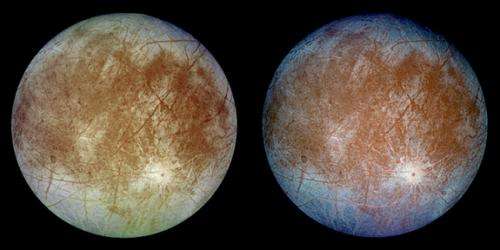
As we discovered in 1977, habitability is typically defined by three key ingredients: water, chemistry and energy. Given these parameters, habitability can be assessed with multiple-fly-by missions like Clipper.
"Oceanic mass, volume, density and salinity can be gotten by fly-by," said Pappalardo. "We can also measure gravitational pull by measuring how the satellite is flexing. From space, a magnetometer can get to the salinity of the ocean by measuring how conductive it is."
Discovering the nature of the mysterious dark surface deposits can be done with multiple flybys as well. Other goals, such as determining the thickness of the global ice shell, can be done from space with simple radar. Perhaps best done from space, however, is choosing a future landing site, in case we do one day decide to set foot on Europa.
"Goal No. 1 is explore habitability," said Pappalardo. "Goal No. 2 is to scout out a landing site. If NASA wants to do a lander mission in the future, we had better scout out landing sites with this mission. From the overall programmatic sense it's very important."
Then, mere months after Clipper's 2012 proposal, something happened that made it possible for a mission like Clipper to sample the interior of Europa without ever landing on it. If the plume seen over Europa's southern pole originated from an ocean like the one on Enceladus, then Clipper could be a short-cut to sampling Europa's heated ocean.
Some wind in the sails
At present, we don't know if the cloud of water vapor seen by Hubble over Europa's south pole originated from an ocean below the ice shell. We do know that if Clipper had been there, it could have flown through the plume and sampled the contents using its mass spectrometer. Now that we've seen a plume, we know that it's possible for a simple orbiter to capture pieces of Europa's water. Now that we've seen clay-like materials in Galileo's photographs, we know that organics are possible, at least on the surface. We've long known that there is abundant energy at work inside Europa, powerful enough to be warming and re-working the surface year after year. We know the potential for life on Europa may be better than anywhere else in the Solar System.
What we don't know, and what we who seek out life in the universe would like to know, is when the Clipper will sail.
Provided by Astrobio.net



















